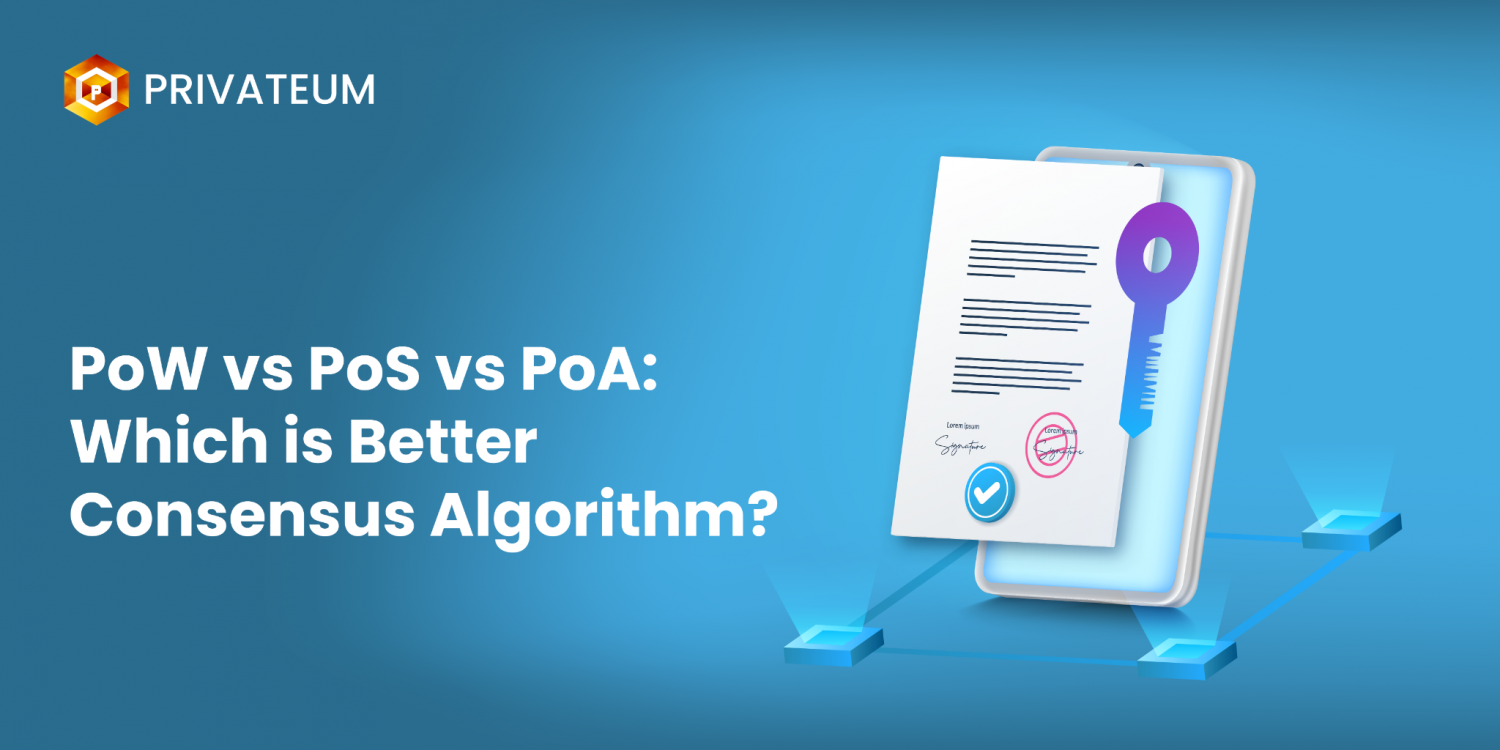
The legacy Proof of Work (PoW) mechanism of Bitcoin is considered a secure and efficient algorithm to reach consensus within a blockchain network. However, the Ethereum Classic hack in 2020 revealed that PoW is penetrable and that nefarious actors can exploit networks utilizing a PoW mechanism. Though Bitcoin's PoW has never been hacked, it is prone to 51% attacks and has lately been receiving flak for being energy-expensive.
For these reasons, Proof of Stake (PoS) has started to rise in popularity.
It is energy efficient and doesn't require heavy machinery for creating and validating new blocks. However, like its predecessor, PoS is also vulnerable.
This article discusses PoW and PoS, as well as their security vulnerabilities. Along with that, let's talk about Proof of Authority (PoA) and try to scrutinize if it is the most secure consensus mechanism out in the market:
What is PoW and its Security Loopholes?
The theoretical concept of Proof of Work was first introduced by Hal Finney in 2004. However, Satoshi Nakamoto used the consensus mechanism for the first time on the Bitcoin network in 2009. It allowed miners to confirm transactions and create new blocks on the blockchain in a decentralized manner. This way miners ensure that no one is "double-spending" cryptocurrencies on a distributed ledger network.
Though Bitcoin was the first to implement PoW, the algorithm was later adopted by various blockchain-based platforms, including Ethereum and Litecoin. While being a secure model, PoW is prone to vulnerabilities and consumes a lot of electric and computational energy.
Problems with PoW
-
High Energy Consumption: The PoW of Bitcoin has been accused of being the reason for breaching the threshold of 2 degrees Celsius.
Besides, the PoW of Bitcoin is responsible for producing close to 69 million metrics of CO2 by itself.
-
51% Attacks: If miners (a group of miners) can accumulate 51% of Bitcoin's hash rate, they can flout the rules temporarily, block transactions, or double-spend BTC. Ethereum Classic's hack in August 2020 is a classic example of a 51% attack, which caused a reorganization of over 7,000 blocks, equivalent to 2 days of mining.
-
Mining Centralization: PoW is considered decentralized. However, Bitcoin, the most decentralized network, has three mining pools controlling almost 50% of the Bitcoin network's computational power.
What is PoS and its Security Vulnerability
Proof of Stake (PoS) is another consensus mechanism that allows network validators to agree upon a single true record of data history. Unlike PoW that has miners and uses computers and heavy machinery to mint new blocks, PoS has validators and uses staked coins to attest blocks into existence. This mechanism is energy-efficient, although it is complicated and has security vulnerabilities like:
-
Block validators may wield a high amount of power if the number of validators is less.
-
A major weakness of the PoS system is that it favors wealthy users- the more you stake, the more it is likely that a block will be validated.
PoA - Better Alternative of PoW and PoS
Similar to PoS, Proof of Authority (PoA) has validators that help reach consensus within the network. However, instead of coins, validators in PoA stake their reputation. Therefore, PoA networks are secured by validating nodes that are randomly selected as trustworthy entities.
Since PoA incorporates a more human security approach by including validators that stake their reputation, the network leveraging this mechanism is sustainable and secure from replay and 51% attacks. Additionally, the PoA Model is highly scalable because it relies on a limited number of validators.
But, isn't PoA Centralized?
PoA mechanism foregoes decentralization. While it is just an effort to make centralized systems more efficient, there are platforms working towards distributing the trust in the PoA mechanism.
For example, Privateum, a private, global, and sustainable financial crypto platform, adds a Hybrid Blockchain Architecture, Ghost Network, and appropriate KYB/KYC Procedures to make PoA as secure as possible for consortium blockchain networks.
Closing Thoughts
The consensus mechanism of a network is essential to maintain the integrity of its ecosystem.
While PoW is energy-expensive and PoS has security vulnerabilities, PoA is an ideal choice because it is highly secure and uses less energy.
However, PoA is geared towards enterprises or private organizations because it is more of a centralized model to maintain consensus on a blockchain network.
Projects like Privateum are already working towards adding trust to the PoA model; so, we might shortly see public networks utilizing a PoA mechanism.
* This is a contributed article and this content does not necessarily represent the views of techtimes.com









